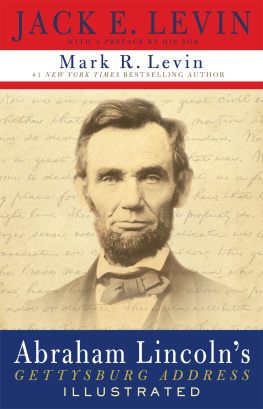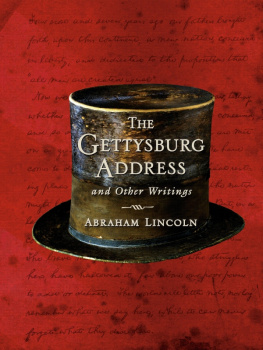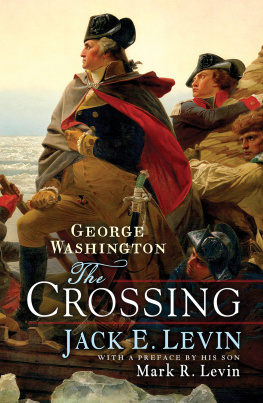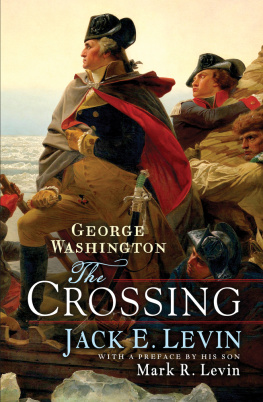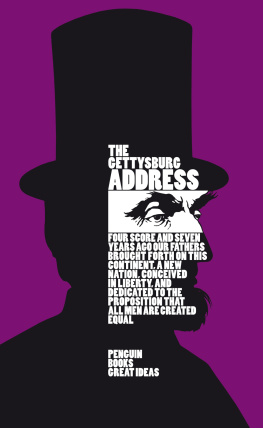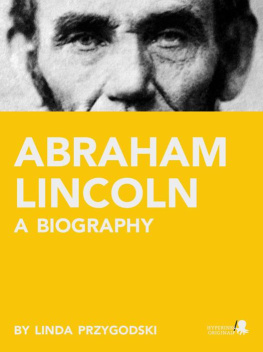Thank you for purchasing this Threshold Editions eBook.
Join our mailing list and get updates on new releases, deals, bonus content and other great books from Threshold Editions and Simon & Schuster.
C LICK H ERE T O S IGN U P
or visit us online to sign up at
eBookNews.SimonandSchuster.com
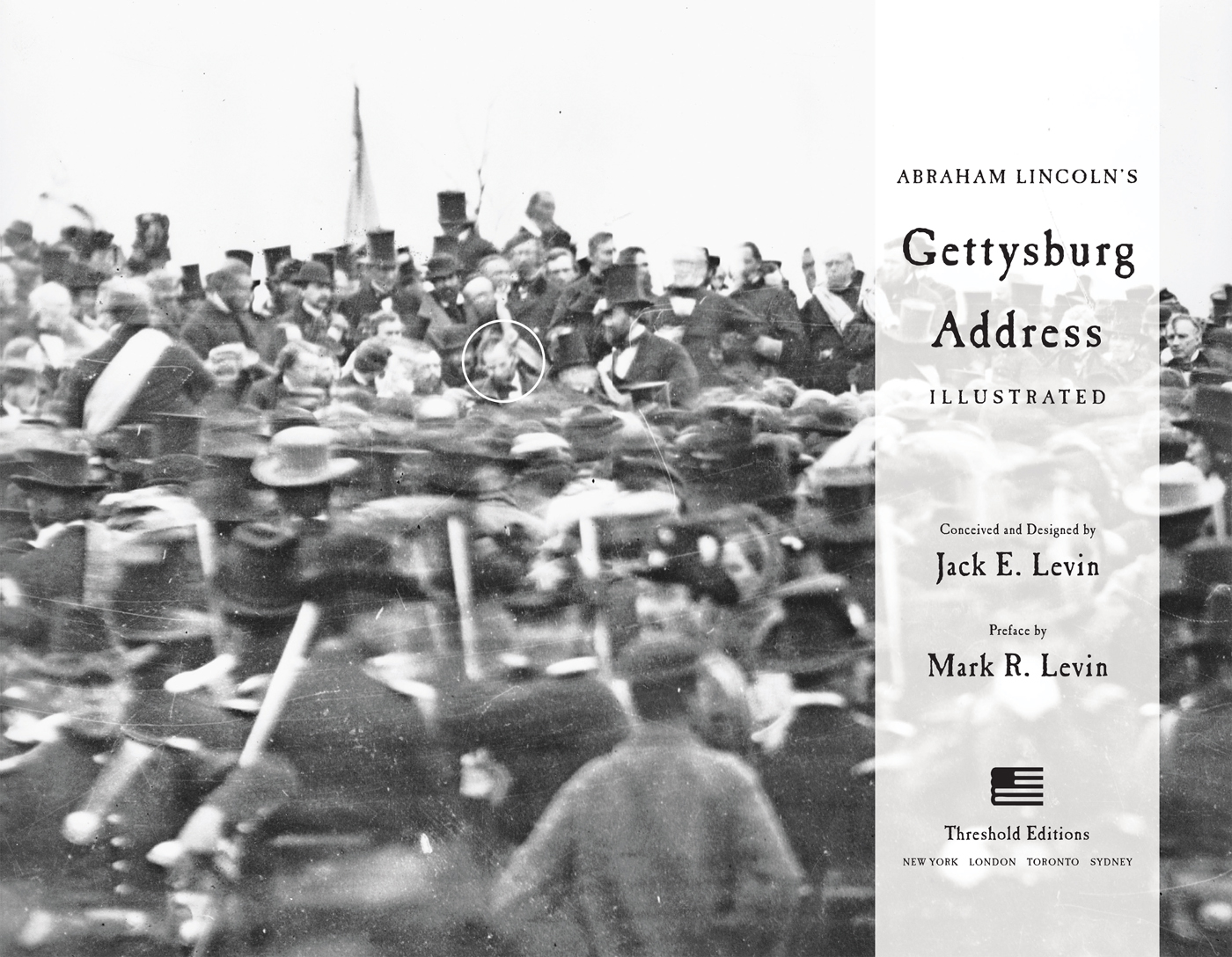
Contents
Dedicated to my wife, Norma, and our family, and to all the patriots who love our country
Preface
My Father and the Gettysburg Address
On July 4, 1937, my father, Jack, then twelve years old, and a neighborhood buddy walked several miles from their homes to the parade route where the city of Philadelphia was celebrating our nations founding. The route stretched from Center City Philadelphia, not far from Independence Hall, to the Philadelphia Art Museum, which Sylvester Stallone would make famous in his Rocky movies nearly forty years later. One of the dignitaries in the parade caught my fathers attentiona Civil War veteran. He sat on the back of a four-door convertible dressed in his old Union uniform, including his campaign hat. Behind him marched a small group of Spanish-American War veterans. But of all the soldiers, veterans, and marching bands my father saw that day, the Union soldier stood out. Young Jack had read somewhat about the Civil War in school, but seeing that soldier in the flesh intrigued him. The soldier would become seared in my fathers mind. The most costly war in American history had become real to him. Thus began my fathers lifelong journey of self-education and patriotic preaching about this great nations history and founding principles.
At a young age, Jack had a knack for drawing, designing, and inventing. When he was thirteen, he designed an automobile window invention for a contest the Philadelphia Daily News was conducting in conjunction with the release of the movie Young Tom Edison , starring Mickey Rooney. He was one of only five winners citywide and earned a trip to the 1939 New York Worlds Fair. At fifteen, my father submitted an idea (with drawings) for animating the story A Christmas Carol to the Walt Disney Studio in California. The studio loved it and asked that he provide more examples of his work, including humorous cartoon drawings, which he did. They next contacted Jacks parents and asked whether they would allow their son to join Disney Studio. They would provide him with dormitory space and schooling at their facility while he was working for them. But his parents, concerned about his age, turned down the offer.
My father grew up during the Great Depression. His family was very poor. His father, Harry, worked at part-time jobs when he could find them. And his mother, Sarah, worked in a cigar factory. Jack was the eldest of four children, and the only boy. When he turned sixteen, after the school day ended he would walk to the cigar factory, where he worked until midnight, earning the going rate of seventeen dollars a week. On the weekends, my father took freelance jobs with furniture frame manufacturers, sketching frames to upholster sofas and chairs. He was paid two dollars for a set of three drawings. The manufacturers salesmen used the finished drawings with their customers.
A few months later, the Japanese attacked Pearl Harbor. Jack spent the summer working at the Cramps Shipyard, where they built destroyers and submarines. But he wanted to do more for the war effort. Like so many wonderful young men at the time, my father decided to enlist in the armed forces. He wanted to be a cadet in the Army Air Corps, which today we know as the Air Force. But Jack was only seventeen. He was too young. So he secured a copy of his birth certificate from city hall and rubbed out the 5 in 1925 (his birth year) and wrote in 4. Just like that, he had reached the legal age requirement of eighteen. Now, if he could pass the rigorous Air Corps exam, he was in. Ten would-be cadets took the exam, including students from the University of Pennsylvania, but only four passed, including my father. Not long thereafter, as my father was boarding a train to Biloxi, Mississippi, for basic training, a soldier stopped him and told him the lieutenant wanted to see him. The lieutenant, who had taken a close look at the birth certificate, asked Jack how old he was. Jack told him the truth. The lieutenant wasnt very happy, but he told my father when he turned eighteen, he could join up. A week after he turned eighteen, he did. And while in the service, Jack would use brief respites to draw cartoons, which were published in a variety of newspapers.
After the war, my father worked for a company making displays for store windows and trade shows. Around this time he met a beautiful young lady, Norma Rubin. The next morning Jack told his mother that one day he would marry her. Norma headed to Syracuse University, and so did Jack, with the help of the G.I. Bill. He earned his room and board by working in the cafeteria. But Jacks love of art and history would lure him back to his hometown of Philadelphia. And after much pleading by Jack, Norma returned with him. They were soon married.
Norma was a brilliant student. She graduated from Arcadia University with a Bachelor of Science degree and began teaching fourth and fifth graders in public school. Jack enrolled in the Philadelphia College of Art, where he majored in advertising and began experimenting with new ideas, in particular unique drawings and images of clowns. He created a new concept at the timeusing only hands and faces to convey ideas and messages, which he turned into a cartoon strip called, remarkably enough, Hands and Faces . The comic strip was so original that it was picked up by General Features Syndicate and published in newspapers throughout the United States.
It was now the mid-1950s. My parents, who were always independent and entrepreneurial at heart, decided to start their own small businessa preschool and summer day camp they named Hawthorne Country Day School and Camp. They had little money. They couldnt afford an architect to design the facilities. But like millions of others who pursued the American dream before them and since, they had initiative and ingenuity and were willing to work as hard as they needed to succeed. Norma developed the curriculum for the preschool, hired a teacher to assist her, and oversaw everything from the meals to clean-up. For the camp, she interviewed and hired the counselors, enrolled the children (ages 3 to 14 years), published a weekly newsletter, and handled all the other details required of a well-functioning program.
Among my fathers first projects was to install a steel flagpole on the grounds. He wanted the American flag to be seen from all corners of the property and beyond. During camp each morning, every camper and staffer would say the Pledge of Allegiance in unison, and watch as the flag was raised in the morning, lowered at the end of the day, and meticulously folded and put away. Jack never wavered from this practice. No one was prouder to be an American.
Jack designed the school building, which was part living quarters for the family and part classrooms for the preschool. He also designed and built the wooden desks and chairs and even the wooden toys, handled all maintenance, and helped pick up the children early in the morning and drive them home in the evenings. As the school and camp grew, my father designed a second facility that included two swimming pools. My parents worked sixteen-to-twenty-hour days. Jack eventually had to drop his comic strip, which had run for three years.
In the meantime, in 1955 Norma gave birth to her first baby, Doug. He was followed by me, in 1957, and Rob, in 1958. The three sons grew up in this loving, nurturing, and often hectic environment. I remember the baseball and volleyball games, the swimming races, the donkey rides, the hiking trips, and the great lunches, especially the spaghetti and meatballs. As we boys got older, one of us would accompany my father from time to time when he would pick up the campers in the morning. We usually stopped at a favorite donut shop on the way. And on the return ride after camp, we often went to the local Dairy Queen and maybe the driving range to hit a bucket of golf balls. Despite the great joy, after nearly twenty years of grueling hours, my parents sold their beloved Hawthorne.
Next page
